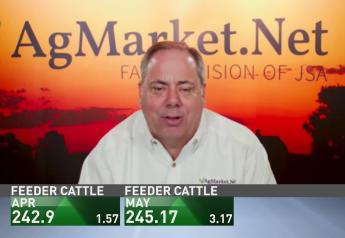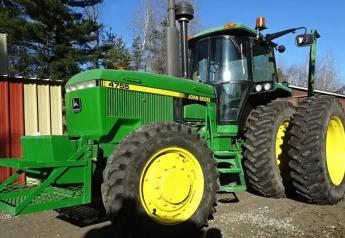700 Barges Stranded by Bridge Closure; 80% Likely Contain Corn
Barge Traffic Stopped 051421
The good news: agriculture has a strong export market for its commodities right now.
The bad news: anyone needing to move corn and soybeans down the Mississippi River and under the Hernando de Soto Bridge, which links Memphis and eastern Arkansas via Interstate 40, can’t because of a large crack in the bridge (Photo below was provided by the Tennessee Department of Transportation.).

A Tennessee state engineer says it could be up to two months before the bridge reopens to vehicle traffic, according to a CNN news story.
Opening the bridge for barge traffic on the river could be on a different time frame. Steenhoek speculated the riverway might be partially opened to barge traffic while bridge repairs are being done.
“What will likely happen, once they get some degree of certainty that barge transportation can occur, is they might have to do things like limit it to daylight hours, or alternate traffic—do northbound and then southbound traffic,” Steenhoek says.
Along with those scenarios, tugboats could be employed to assist barges as they go under the bridge. “(Engineers) will want to make sure it’s safe and that barges aren’t bumping into the bridge in any way, because that’s obviously what they’ll want to prevent,” he says.
More than 700 barges were stranded on Thursday on the river, Bloomberg News reports.
“These barges are full of agricultural products that are being adversely affected,” Steenhoek says. “I would easily say that 80% plus of them are transporting corn. So clearly, our friends in the corn industry are really experiencing some hardship – soybeans as well – but I certainly believe corn is being more adversely affected.”
Soybean exports are not being as affected by the bridge closure, he adds, because they are exported primarily between September and February.
Corn futures fell by the exchange limit to $6.748 a bushel in Chicago on Thursday. A lengthy delay in reopening the river for barge traffic would likely cause a further jolt to crop markets.
According to the USDA, barge shipments of grain and soybeans during the week ending May 8 (the most recent data) were 50% greater than the previous week and 18% higher than the same period last year.
More specifically, the USDA reported 982,000 short tons of grain and soybeans transited Lock and Dam #27 on the Mississippi River (848,000 short tons) and Olmsted Lock and Dam on the Ohio River (134,000 short tons). 84% (825,000 short tons or 29 million bushels) of that volume is corn. If a single barge accommodates approximately 1,500 tons of grain or soybeans, delaying 982,000 short tons of grain and soybeans will amount to 655 barges.
The crack on the bridge was located Tuesday afternoon during a routine, federally mandated inspection that occurs about every two years.
Exporters look for options. Steenhoek anticipates grain exporters will quickly turn to rail transportation to fulfill their export commitments, which will put upward pressure on rail rates.
“When you have a supply chain disruption, it's always remarkable to see how that ripple effect extends throughout the whole industry, and this is clearly an example of that,” he says.
The Soy Transportation Coalition is comprised of the United Soybean Board, the American Soybean Association, and 12 state soybean boards.
As Exports Explode, Emergency Structural Damage on I-40 Bridge Brings Barge Traffic to a Halt







